Bibliophilia: Nature's Craftsmen
This is the first book I intend to share as part of this series chronicling my love for books as works of art. There are far greater specimens, I am certain. I do not possess any that are museum quality. Some I bought simply for their beauty, but most are in my collection because they were useful to me, for either entertainment or education. This book, on the other hand, wasn't mine to begin with. It was something my parents had when I was quite young - I have no idea when it came into the house, I just remember it being always there and I spent many hours poring over it absorbing the good old Reverend's interesting observations of insects and arachnids. If any who read my blog routinely wondered where I came by my deep affection for things with 'too many legs!' then perhaps this will offer some illumination.
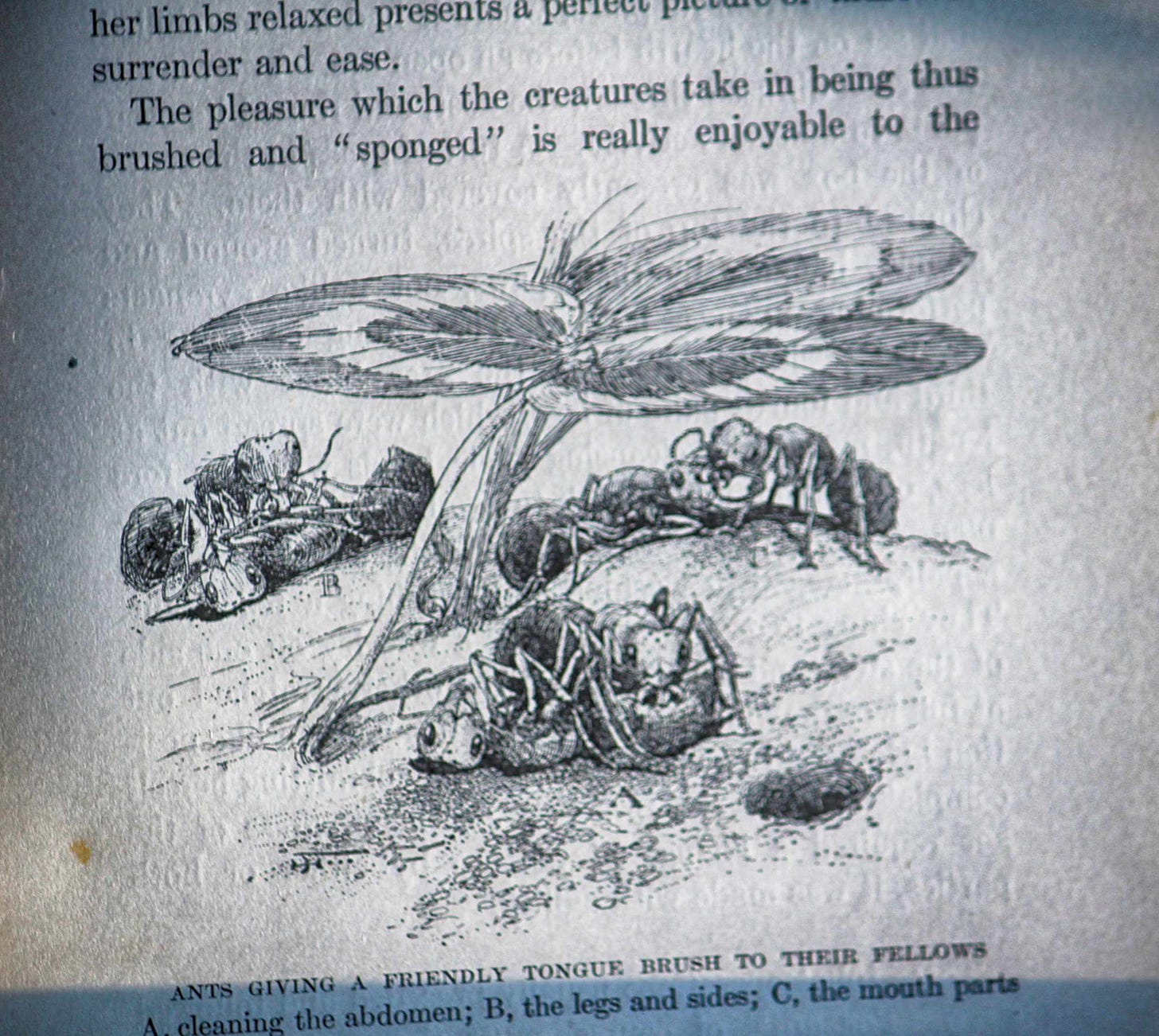
HC McCook's anthropomorphization of his subjects was normal in his time, and amusing now.
In this day and age, such a book, if it were published which it likely would not be, would be intended for a scholarly audience and would be accompanied by photographs. In this book, there are little illustrations, a trifle stiff, but very clear. The typography is likewise clear and clean - some of my old books have interesting ink, but this one has come to it's age with no fading or seeping. It's no longer easily readable, sadly, my childhood sessions with it wore the binding out and it is coming away from it's cover. Still, though, I wanted to share it, because I do love it so.
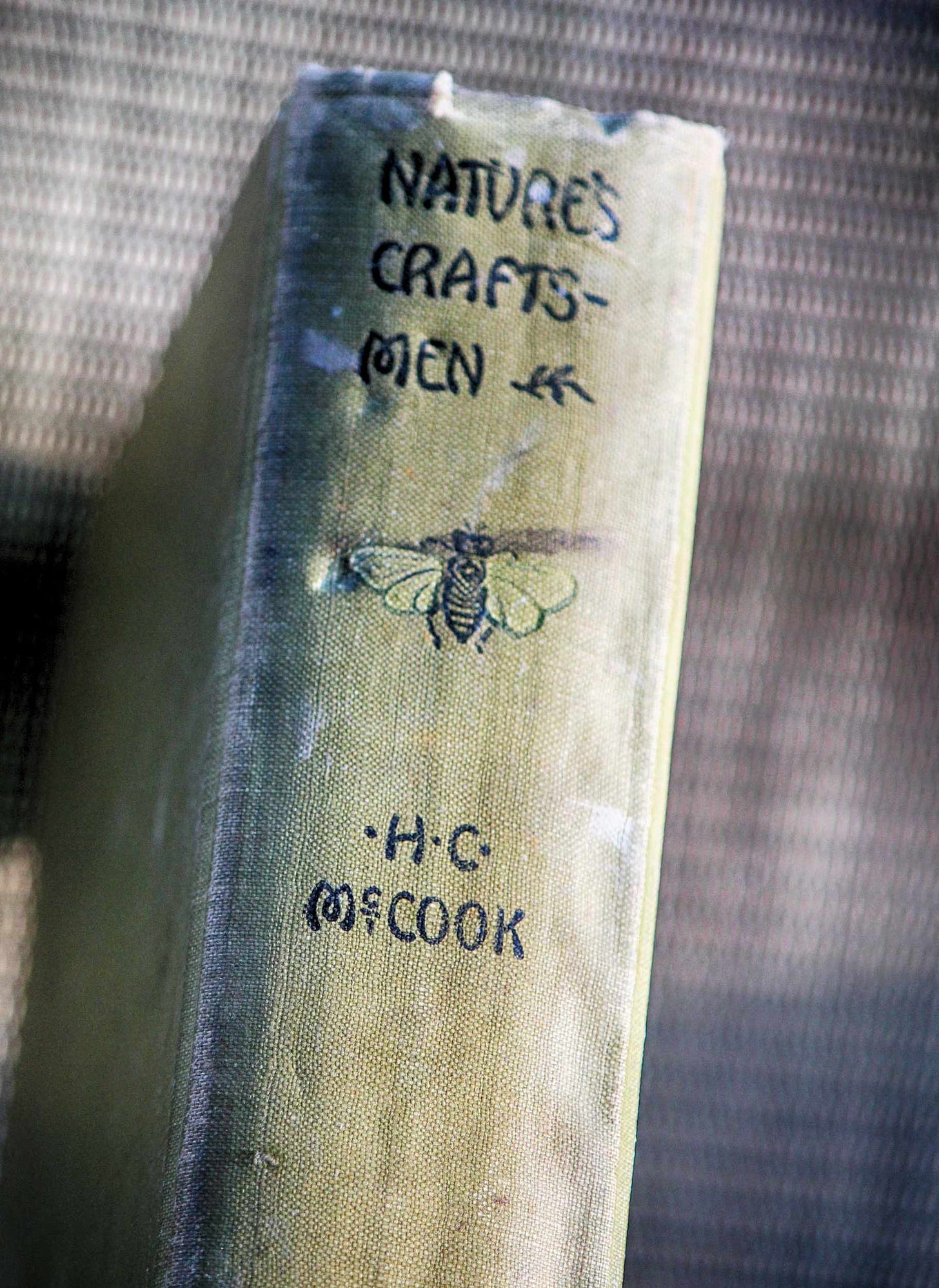
The fabric cover has lasted quite well, considering!
You can read it, yourself! The whole thing, scanned, is available here.
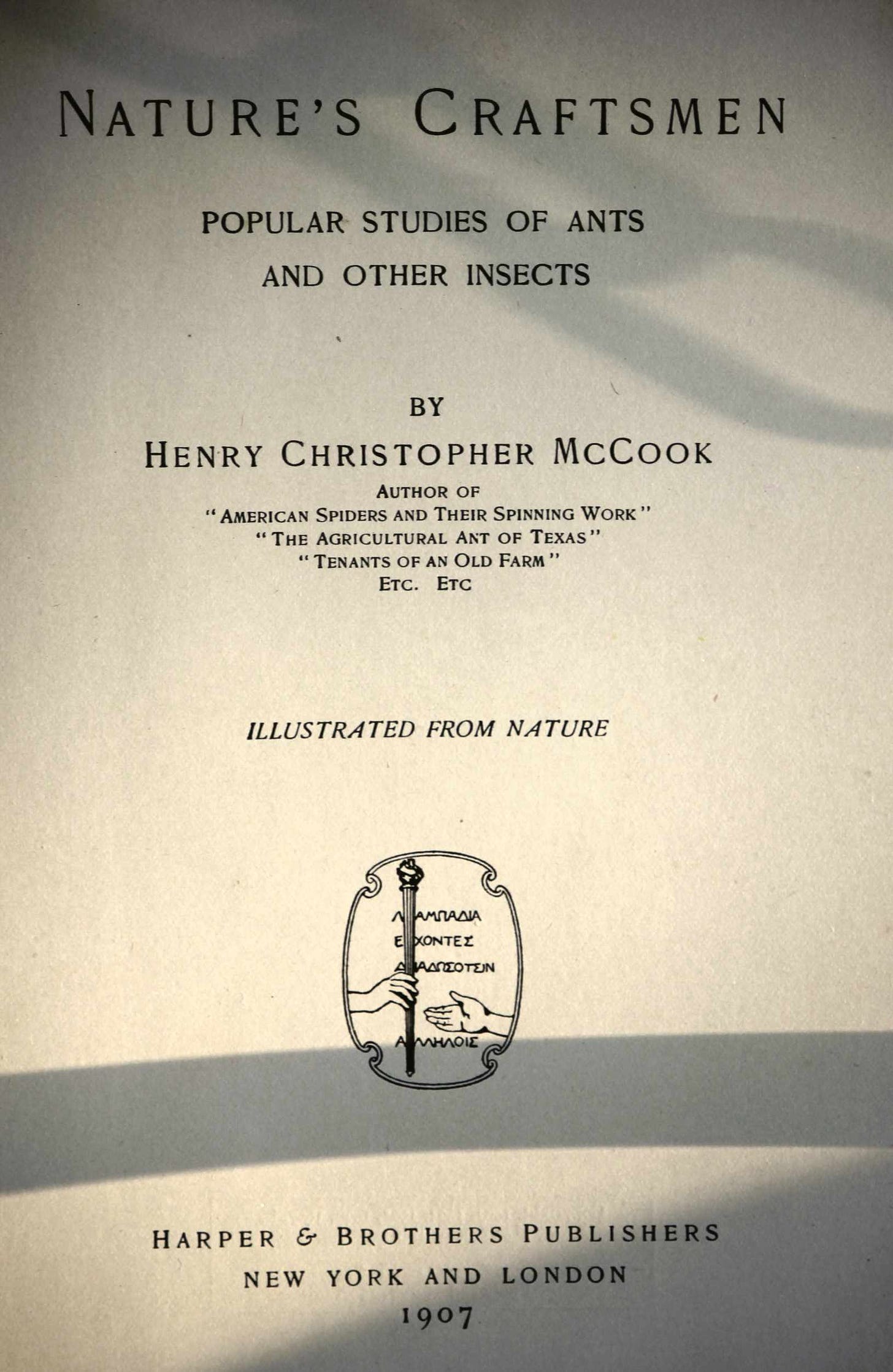
If you're interested in the author, there is a little article at the AntWiki about him, because he was so important in early writings about those industrious creatures. Henry Christopher McCook was a chaplain in the Civil War, and had a career in the Army off and on through his life in addition to being a minister of the church. But his true passion, as you can see from his bibliography, was the families of ants, and bees, and spiders, and many others. He was that odd creature we no longer recognize, a citizen scientist. I regret that we have lost that sort of person, who learned for the passion of their hearts, instead of seeking credentials before they could be seen as an expert.
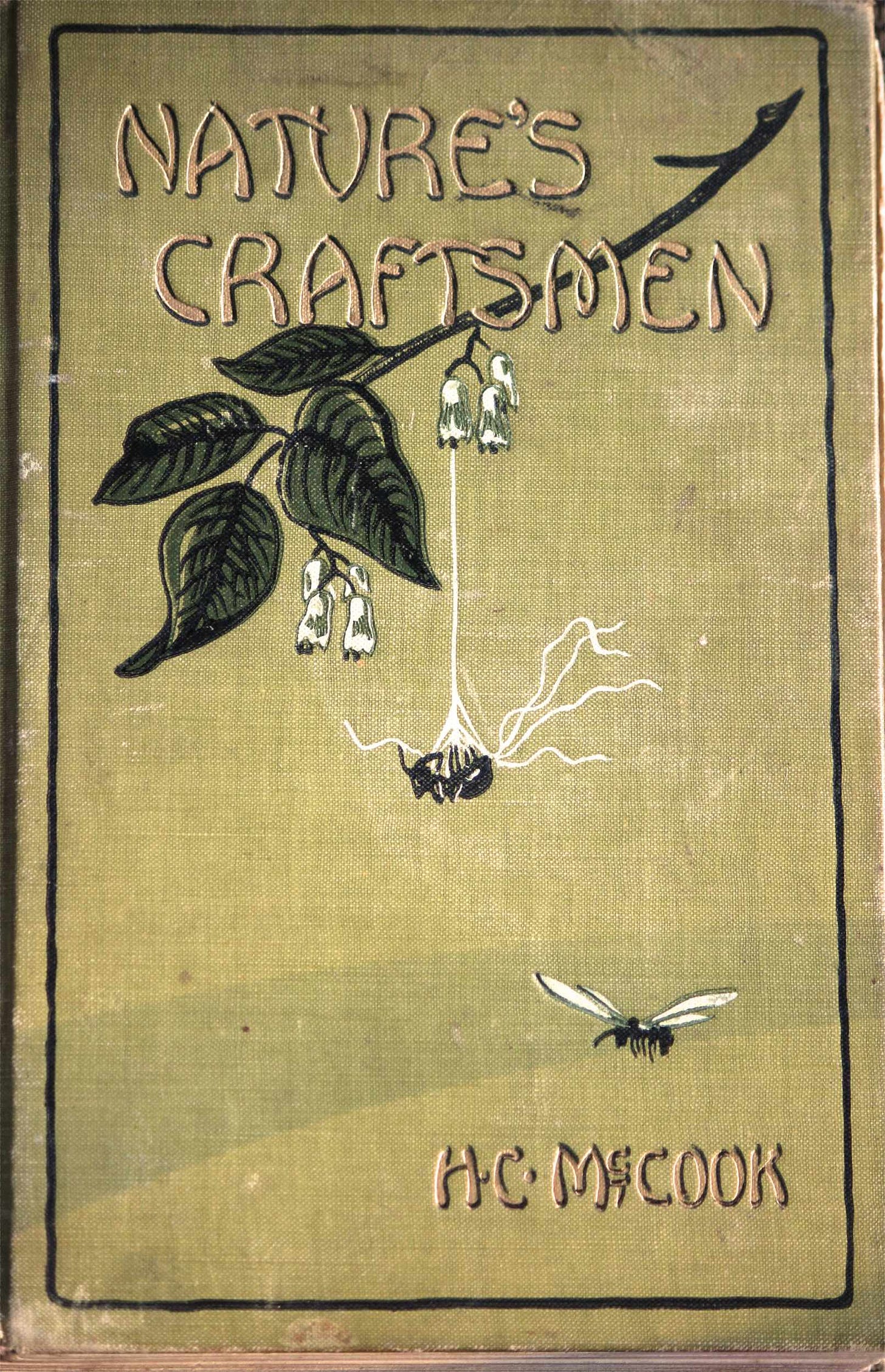
The book likely had a light paper dustjacket when it first came out, but I love the art and gilding.
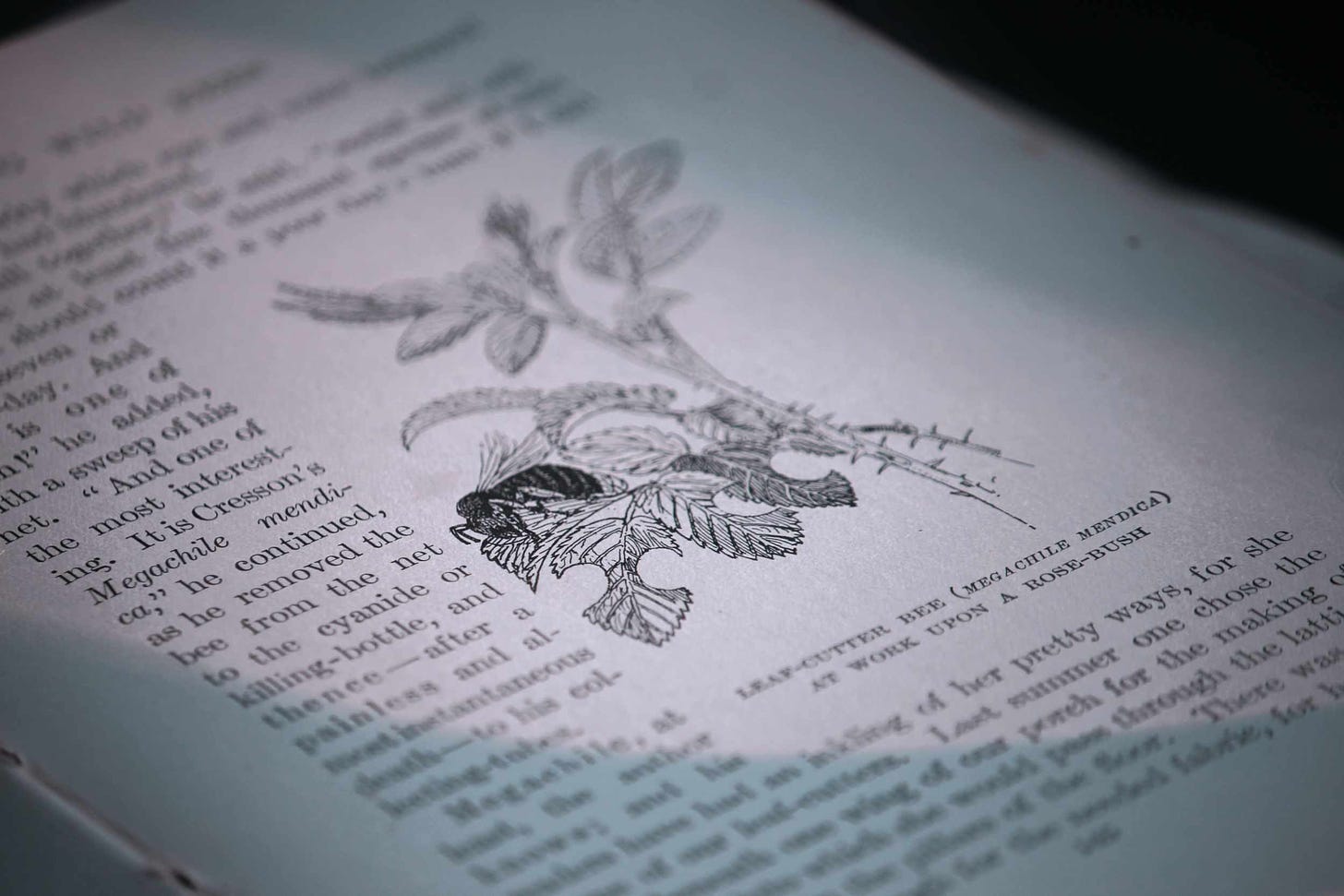
The illustrations are not by the same illustrator, which can be explained by knowing that the book was originally a series of magazine articles.
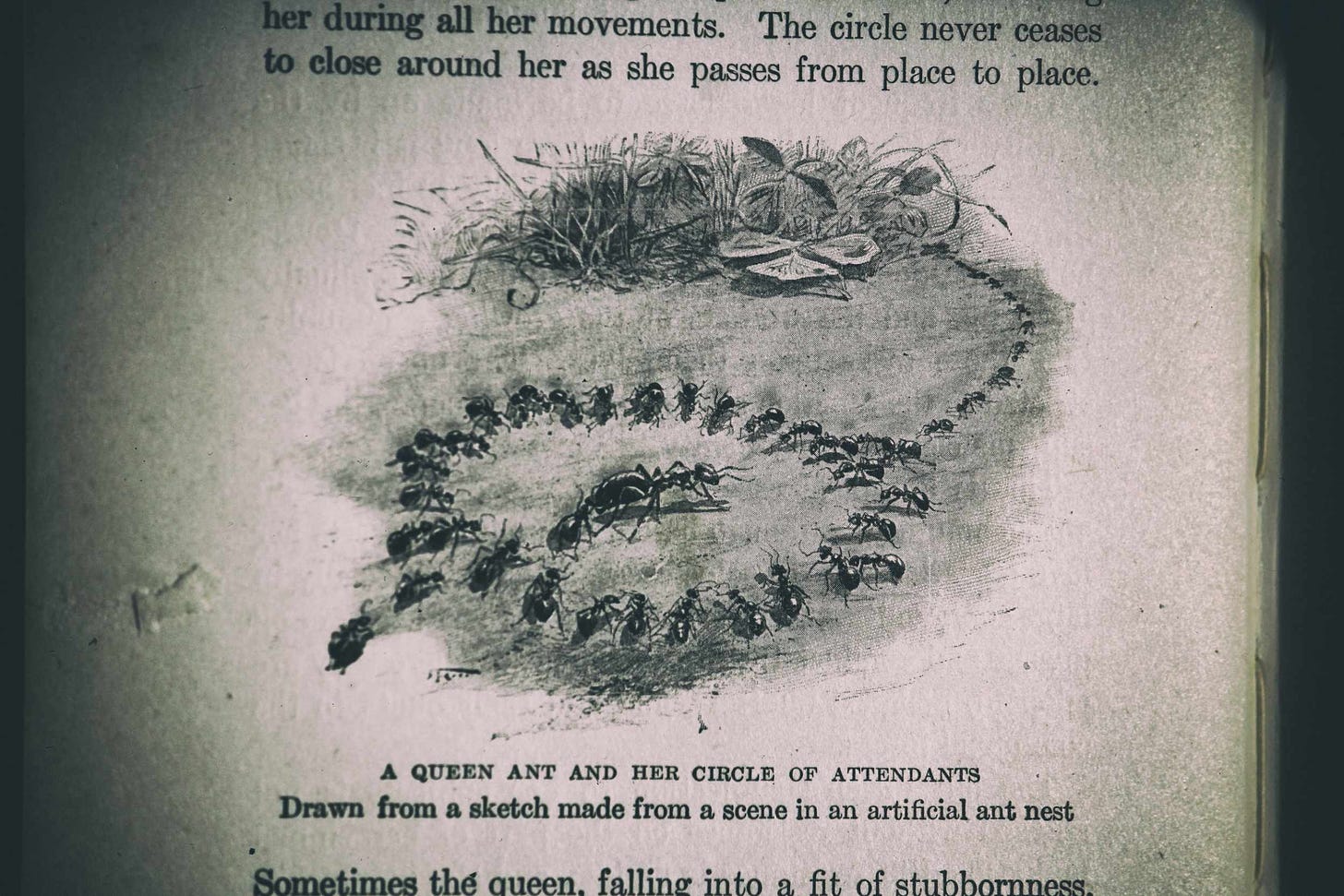
I've never seen this behaviour, but it is a charming idea.
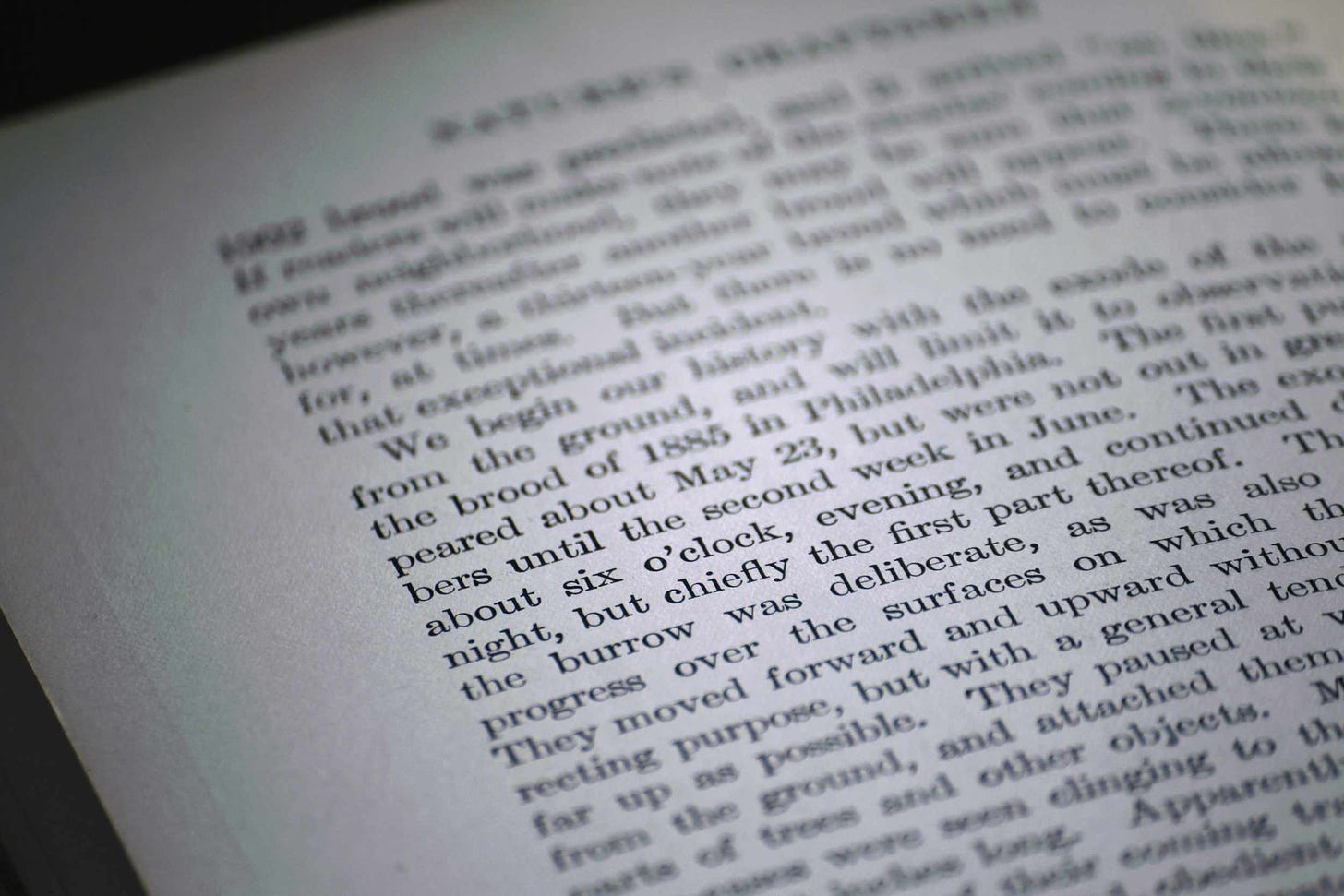
The typography is still bright and clear, more than a century later. I wonder if the good Reverend had any idea?
If you would like, there are high-resolution photos over on Flickr, and I have made them available for non-commercial use with attribution.




